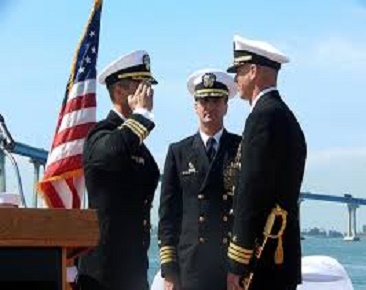U.S., South Korea to Hold Naval Partnership Exercises by Navy Lt. Joshua Kelsey

U.S. Navy ships assigned to Commander, Task Force 30 and CTF-70 are scheduled to begin a series of exercises with the South Korean navy tomorrow to strengthen maritime interoperability and tactics, techniques and procedures.
The U.S. routinely conducts carrier strike group operations in the waters around South Korea to exercise maritime maneuvers, strengthen the U.S.-South Korean alliance and improve regional security.
“This exercise is yet another example of the strength and resolve of the combined U.S. and the [South Korean] naval force,” said Navy Rear Adm. James Kilby, commander of the Carl Vinson Carrier Strike Group. “The U.S. and [South Korea] share one of the strongest alliances in the world and we grow stronger as an alliance because of our routine exercises here in South Korea and the close relationship and ties that we forge from operating at sea together.”
Bilateral Exchange
The exercises will consist of routine bilateral training, subject-matter-expert exchanges, anti-submarine and anti-surface warfare drills, communication drills, air defense exercises, counter-mine planning and distinguished visitor embarkations.
“This defensive exercise focuses on enhancing the interoperability between the [South Korean] and U.S. navies and helps both navies maintain a combined defense posture to protect [South Korea] from future North Korean unprovoked acts of aggression,” said South Korean navy Rear Adm. Choi Sung-Mok, the chief of staff for the South Korean fleet.
Additional surface, subsurface and air assets joining the bilateral exercise include Carrier Air Wing 2; the guided missile destroyers USS Barry, USS Wayne E Meyer, USS McCampbell and USS Stethem; the nuclear fast attack submarine USS Columbus; and P-3 Orion and P-8 Poseidon maritime patrol and reconnaissance aircraft from CTF-72.
Vinson deployed to the region under U.S. 3rd Fleet command and control, including while operating beyond the international dateline, which previously divided operational areas of responsibility for 3rd and 7th Fleets. By operating forward, Third Fleet offers additional options to the Pacific Fleet commander by leveraging the capabilities of 3rd and 7th Fleets. This operational concept allows both numbered fleets to complement one another and provide the foundation of stability in the Indo-Asia-Pacific region.
The Navy maintains a presence in the Indo-Asia-Pacific region to help preserve peace and security and further its partnerships with friends and allies.


